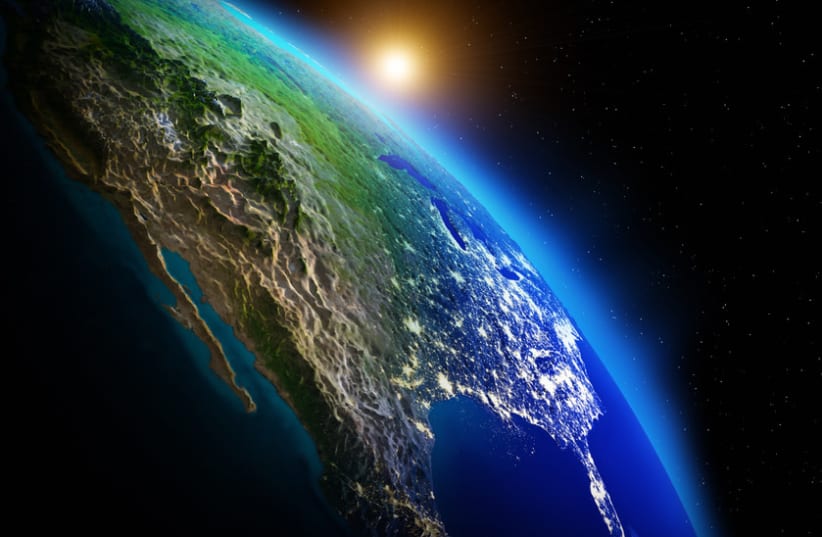How many continents are there in the world?
It seems like a simple question, but geologists, geographers, and historians are divided in their opinions. Let's count: Europe, Asia, Africa, and Australia – those are the obvious ones. America? Divided into two separate continents – North America and South America – with Central America geographically belonging to North America.
So, that makes six continents so far. And let's not forget Antarctica, the last one to be discovered.
Eight continents?
In the past, there were six continents, but today, North and South America are considered separate continents. However, geologists have recently made a groundbreaking discovery: The existence of Zealandia, an eighth continent that had remained hidden for nearly 375 years.
Zealandia, also known as Te Riu-a-Maui in the Māori language, covers an area of 1.89 million square miles, making it part of the former supercontinent Gondwana.
Gondwana, over 500 million years ago, included the landmasses we now know as South America, Africa, Australia, and Antarctica. Interestingly, Israel, now considered part of Asia, was once connected to Africa as part of Gondwana.
The Dutch businessman and sailor Abel Tasman first encountered Zealandia in 1642 during his quest to discover the "Great Southern Continent."
While he didn't find the new land, he did learn from the local Māori about the existence of a vast tract of land to the east. It wasn't until 2017 that geologists confirmed Zealandia's status as a lost continent. The breakup of Gondwana around 200 million years ago led to the separation of Zealandia from Antarctica about 100 million years ago, and from Australia around 60 million years ago.
Despite being mostly underwater with 94% of its surface submerged in the Pacific Ocean, Zealandia spans approximately 4.9 million square kilometers – less than a tenth of the area covered by Eurasia.
You may wonder how a continent can exist underwater, but the definition of a continent does not require it to be above sea level. In Zealandia, only two main areas, New Zealand and New Caledonia, are above sea level, along with several smaller islands, making up just six percent of the continent's total area. The other continents also have areas considered part of the continent despite being below sea level. For instance, 55% of Antarctica is below sea level, while Africa, the most landmass-dominant continent, only has 17% below sea level.
Zealandia serves as a prime example of how something "very obvious" can take centuries to be recognized.
Did you know there was an eighth continent?It's called Zealandia - or Te Riu-a-Māui in the Māori language - with roughly 95% of it lying below the ocean. The most recognisable land mass on the continent is the country of New Zealand. Zealandia was finally discovered in 2017,… pic.twitter.com/TCnHHd48gl
— Ben (@BenNderituM) September 26, 2023
Where to visit on Zealandia
Recently, researchers have published the most accurate map of Zealandia to date in the journal Tectonics. Defining its boundaries and geological structure was challenging due to its extensive submergence. Fortunately, rock samples collected from the ocean floor and data from seismic and magnetic measurements greatly contributed to this mapping effort. By identifying significant geological features such as subduction zones and fractures, researchers were able to establish clearer tectonic boundaries.
What's even more intriguing is that tourists from around the world may already be enjoying their vacations on Zealandia without realizing it.
According to Dao van Hinsbergen, a professor of global tectonics and paleography at the University of Utrecht, there are many vacationers who are unknowingly spending their holidays on Zealandia. Here are eight fascinating destinations where tourists can explore this not-so-lost continent:
1. Milford Sound, New Zealand – Voted the world's top travel destination in TripAdvisor's 2008 Travelers' Choice Awards.
2. Waitomo Caves, New Zealand – Known for its unique cave systems located in the King Country region of the North Island.
3. Wānaka, New Zealand – A popular summer town in the Otago region of the South Island, renowned for its skiing holidays.
4. Ōhope, New Zealand – Situated on the northeast coast of the North Island, offering spectacular views of the beautiful coastline.
5. Lord Howe Island, Australia – An ancient volcanic remnant with a distinctive sickle shape and glowing mushrooms that emit light even after being picked.
6. Ball Pyramid, Australia – A volcanic plug island formed about 7 million years ago, known for its shield cone and caldera remnants.
7. Nepean Island, Australia – Though difficult to access due to its small size and steep cliffs, its unspoiled beauty makes it worth the effort.
8. Waimangu, New Zealand – Home to the largest volcanic eruption in the last 700 years in New Zealand, known as the Mount Tarawera eruption
